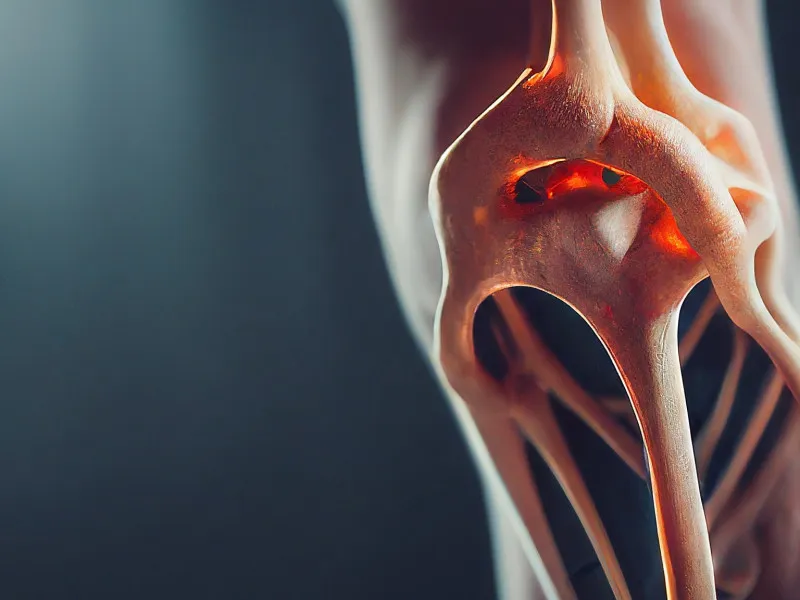
Introduction
Magnetic Resonance Imaging (MRI) has become an indispensable tool in diagnosing and managing various medical conditions, particularly in orthopaedics. For patients experiencing joint pain or discomfort, understanding how MRI scans can detect degenerative cartilage conditions is crucial. This article aims to demystify MRI technology and explain its role in diagnosing cartilage-related issues.
What is an MRI Scan?
MRI is a non-invasive imaging technique that uses a magnetic field and radio waves to create detailed images of the organs and tissues within your body. Unlike X-rays and CT scans, MRI does not use ionising radiation, making it a safer alternative for repeated use.
Why MRI for Cartilage Conditions?
Cartilage does not show up on regular X-rays as it’s a non-calcified tissue. MRI, on the other hand, provides detailed images of both hard and soft tissues, making it an excellent tool for examining cartilage. It helps in identifying the early stages of degenerative cartilage conditions which are not visible on X-rays.
Detecting Degenerative Cartilage Conditions with MRI
Degenerative cartilage conditions, such as osteoarthritis, occur when the cartilage that cushions the ends of the bones wears down over time. MRI scans are particularly useful in detecting these conditions for several reasons:
- Detailed Imaging: MRI provides high-resolution images, allowing doctors to view the thickness and integrity of cartilage in great detail.
- Early Detection: MRI can detect cartilage changes that suggest early degeneration before they become symptomatic or visible on other imaging modalities.
- Assessing Severity: MRI helps in determining the severity of the cartilage loss, which is crucial for treatment planning.
- Identifying Other Joint Issues: It can also identify other problems contributing to joint pain, such as bone bruises or ligament tears, which often accompany cartilage degeneration.
The Open MRI Procedure
Undergoing an Open MRI scan is a straightforward process:
- The patient lies on a movable table that slides underneath the MRI scanner.
- The machine uses a powerful magnet and radio waves to create images of your body. It’s important to remain still during the scan.
- The procedure is painless, and the structure of the Open MRI scanner means that patients larger in size or suffering from claustrophobia, will be more comfortable.
- MRI scans can take anywhere from 20 to 60 minutes, depending on the area being examined.
Safety and Considerations
MRI is safe for most people. However, it’s important to inform your healthcare provider if you have any implants, such as pacemakers or metal clips, as these can be affected by the magnetic field.
Conclusion
MRI scans play a vital role in diagnosing degenerative cartilage conditions. They provide valuable information that can help your doctor make a more accurate diagnosis and develop an effective treatment plan. If you are experiencing joint pain or stiffness, talk to your doctor about whether an MRI scan is right for you.
Frequently Asked Questions (FAQs)
Q1: Is an MRI scan painful?
A: No, an MRI scan is a painless procedure. You will need to lie still inside the MRI machine, which some people find uncomfortable, but the scan itself does not cause pain.
Q2: How long does an MRI scan take?
A: The duration of an MRI scan varies depending on the area being examined. Typically, it can take anywhere from 20 minutes to over an hour.
Q3: Will I need to prepare anything before my MRI scan?
A: Generally, no special preparation is needed. However, you may be asked to remove any metal objects or jewellery, as these can interfere with the magnetic field.
Q4: Can everyone have an MRI scan?
A: MRI is safe for most people, but not suitable for everyone. If you have certain types of metal implants, a pacemaker, or other specific medical devices, you may not be able to have an MRI. Always inform your healthcare provider of any implants or medical conditions.
Q5: Are there any risks associated with MRI scans?
A: MRI is a very safe procedure and does not involve exposure to radiation. However, it’s important to stay still during the scan to ensure clear images are obtained.
Q6: How can an MRI scan help with diagnosing cartilage issues?
A: MRI scans provide detailed images of soft tissues, including cartilage. They can detect early signs of degeneration, assess the severity of cartilage loss, and identify other joint problems.
Q7: Will I need to have an MRI scan if I have joint pain?
A: Not necessarily. Your doctor will decide if an MRI scan is needed based on your symptoms, physical examination, and possibly other tests.
Q8: Can an MRI detect all types of cartilage problems?
A: While MRI is excellent for visualising soft tissues, some cartilage conditions may require additional or different types of imaging to be fully assessed.
Q9: What should I do after receiving my MRI results?
A: Your doctor will discuss the results with you and recommend a treatment plan if necessary. This may include medication, physiotherapy, lifestyle changes, or further investigations.
Q10: How accurate are MRI scans in diagnosing degenerative cartilage conditions?
A: MRI scans are highly accurate in diagnosing soft tissue conditions, including degenerative cartilage issues. However, the interpretation of the results by a skilled radiologist is key to an accurate diagnosis.
